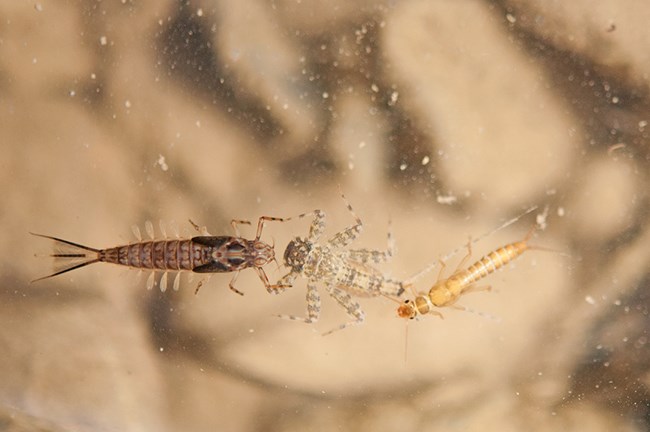
NPS
Parks in America’s heartland protect free-flowing rivers, mighty springs, and meandering prairie streams. An awesome variety of fish, reptiles, insects and plants live in these waterways. People float, fish, and find solace here. Yet, pollutants from growing cities and farms, treated sewage, and erosion degrade water quality and harm the plants and animals living there. NPS scientists stand guard by monitoring aquatic invertebrates, the insect larvae and nymphs living in stream beds. Some species can survive poor water quality, while others require pristine conditions. Aquatic invertebrates serve as the “canary in the coal mine” for overall stream health.

Right Image: Monitoring area of a creek.
NPS-Photos
Monitoring Questions & Approach
- Invertebrate diversity tells us how a river changes over time.
- We find out what species are present and how abundant they are. We then rate how tolerant they are to pollution. This information helps us estimate water quality condition of streams.
- We collect habitat data that helps us determine how the stream changes over time.
- Data on stream invertebrates helps us assess impacts of development and pollution in the watershed.
Reports and Protocols
Source: NPS DataStore Collection 3745. To search for additional information, visit the NPS DataStore.
Source: NPS DataStore Collection 4450. To search for additional information, visit the NPS DataStore.
Monitoring Updates
Last updated: May 13, 2025
